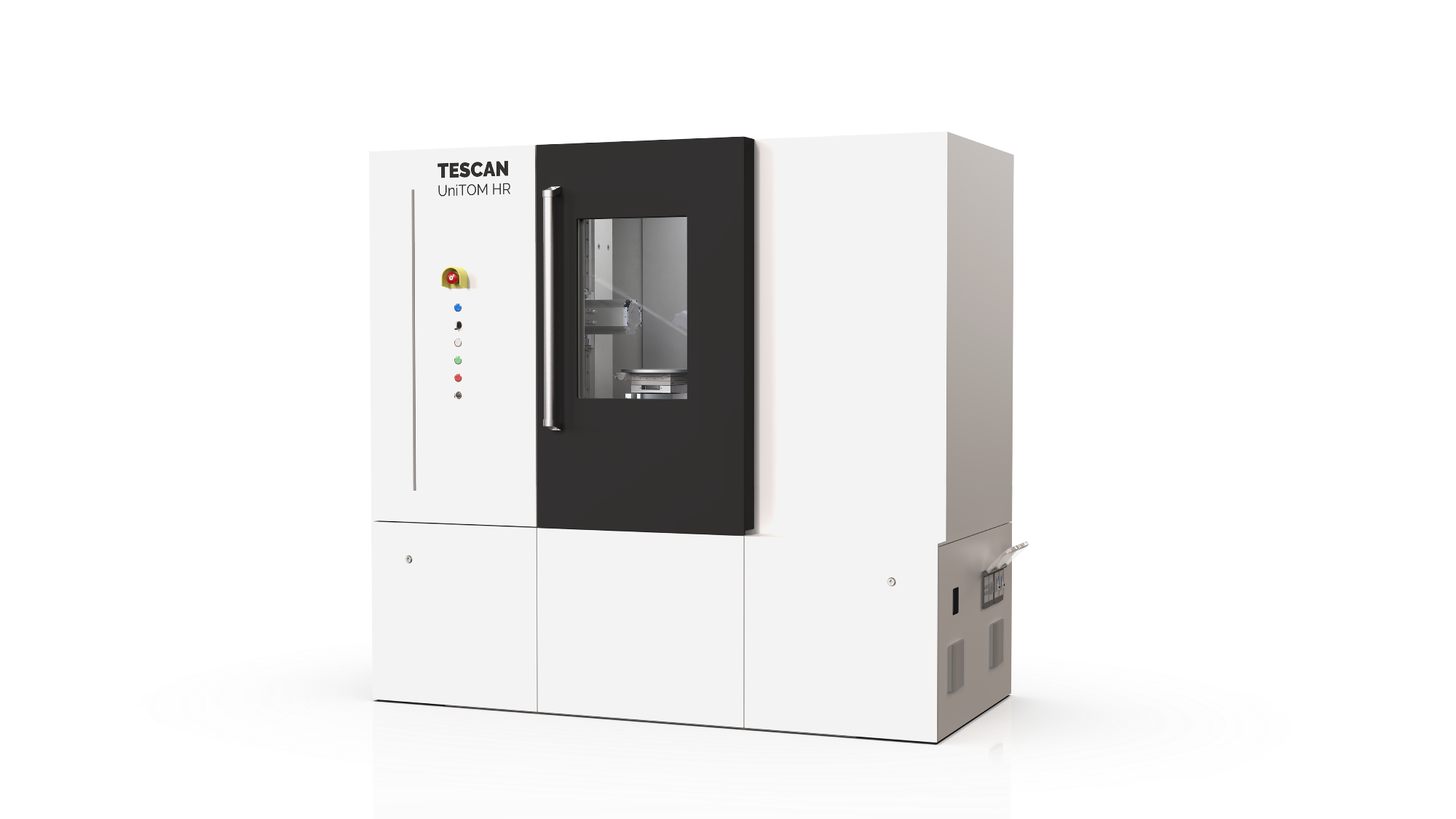Lab-based dynamic-CT is new and a huge step forward in the world of computed tomography. TESCAN Announces Its First Installation of the New UniTOM HR Dynamic Micro-CT System at Catholic University of Leuven.

Image Credit: TESCAN
TESCAN ORSAY HOLDING a.s. announces the first installation of its new UniTOM HR dynamic micro-CT system at the KU Leuven XCT Core Facility, Belgium.
Launched in August 2021, UniTOM HR is the first dynamic micro-CT system to offer sub-micron resolution 3D non-destructive imaging and high temporal resolution for uninterrupted 4D dynamic CT experiments.
It provides the extra step in the resolution needed to fully understand the behavior of complex materials, as the smallest features often play a crucial role in material performance.
KU Leuven will use the UniTOM HR to study how materials change over time, in response to an applied load, during flow processes, inflation of biomedical tissues, and in many other research areas where sub-micron resolution is needed to reveal small changes.
KU Leuven also has a TESCAN UniTOM XL dynamic micro-CT system in its laboratory for high-throughput studies on a range of samples.
With our two TESCAN dynamic micro-CT systems, we have the UniTOM HR that allows us to scan at 600 nm resolution, which opens up a lot of new pathways for research, and on the other hand, we have the UniTOM XL―both systems are ready for dynamic in-situ scanning
Dr. Jeroen Soete, Research Expert, KU Leuven
“These systems are essential for us because most of the processes we study are time-dependent and without dynamic scanning, it would be simply impossible to validate these processes”, Dr. Soete went on to say.
KU Leuven’s mission is to provide education, research and services to industry in the fields of materials engineering and biomedical sciences.
They will use the new dynamic CT systems from TESCAN to look at changes in the microstructure of the material, for example, sudden cracks in a composite material, like in masonry stones.
When compressed, such as in a building, they can see how the cracks develop over time and what leads to the failure of the masonry structure.
They can change the design of the composite material in order to stop the crack from developing in the first place―leading to new and improved building materials. In addition, they will also study flow processes, the shrinkage and swelling of samples, and inflation of biomedical tissues.
“We really have a lot of options for in-situ research with these new systems,” said Professor Martine Wevers, head of the research group Materials Performance an Nondestructive Testing and, until August, chair of the Department of Materials Engineering, KU Leuven. “And that’s a huge advantage―looking for new materials that are much more damage tolerant, tougher, to create new materials for a better world.”
UniTOM HR is ideal for both industrial and academic researchers that need micron and sub-micron CT imaging to visualize a sample’s internal structure and also want to gain a deeper understanding of a sample’s behavior under certain environmental conditions. In addition to the UniTOM HR, TESCAN offers:
- DynaTOM, the world’s first dedicated dynamic micro-CT for complex in-situ experiments that manages all cabling and tubing through an innovative design, eliminating any wrapping or entanglement
- UniTOM XL, for high-throughput experiments on a diverse range of samples
- CoreTOM, for multi-scale micro-CT investigations in earth sciences
KU Leuven is doing innovative research in the areas of in-situ time-resolved imaging and the dynamic micro-CT systems will help them to further push the boundaries of innovation
Dr. Wesley De Boever, Product Marketing Manager, TESCAN
Dr. De Boever continued: “As the leader in dynamic micro-CT, we couldn’t be more pleased to see the first installation of the new UniTOM HR take place at KU Leuven".
For more information about TESCAN’s dynamic micro-CT solutions, including a video interview with KU Leuven, visit: https://www.tescan.com/product/dynamic-micro-ct-for-materials-science-tescan-unitom-hr/.